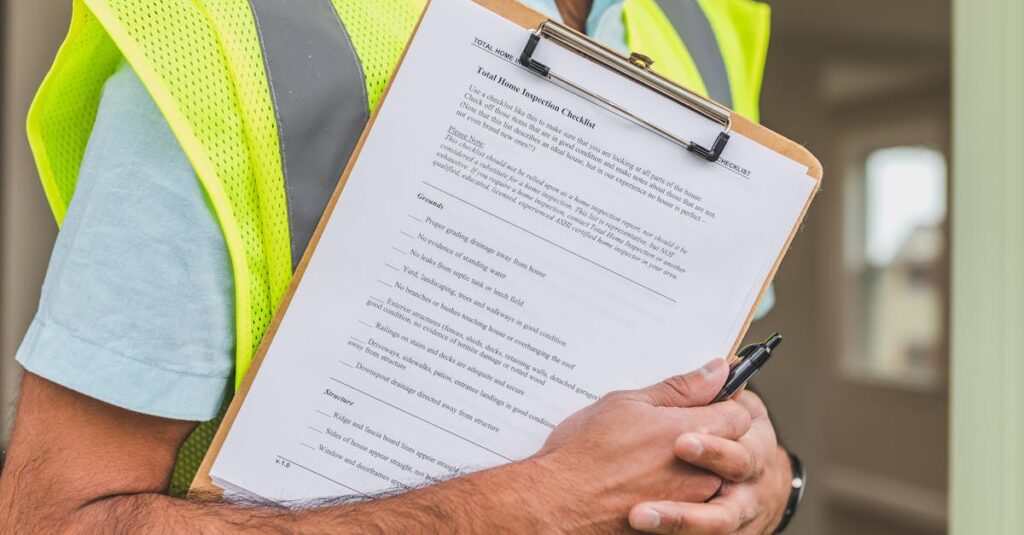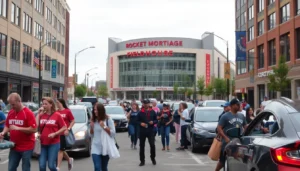Table of Contents
ToggleRunning a mall is like juggling flaming torches while riding a unicycle—exciting but a little chaotic. To keep everything from turning into a circus act, a solid mall maintenance checklist is a must. Think of it as your trusty sidekick, ensuring that every corner sparkles and every restroom is less “oops” and more “ahh.”
Importance Of A Mall Maintenance Checklist
A mall maintenance checklist plays a critical role in ensuring the shopping environment remains safe and inviting. Regular inspections and maintenance tasks help identify issues before they escalate, reducing costly repairs and downtime. It enhances the overall visitor experience by maintaining clean facilities and functional amenities.
Prioritizing cleanliness is essential as it directly influences customer satisfaction. Well-maintained restrooms, food courts, and common areas attract more visitors and encourage longer stays. Visitors are more likely to return to a mall that appears cared for and organized.
Safety inspections, such as checking fire alarms and emergency exits, safeguard both shoppers and staff. A checklist streamlines these important tasks, ensuring compliance with safety regulations. This proactive approach prevents accidents and legal issues, protecting the mall’s reputation.
Additionally, a maintenance checklist assists in scheduling routine tasks like HVAC servicing or exterior cleaning. Ignoring these aspects may lead to discomfort during peak shopping times or damage to the building’s exterior. Addressing maintenance proactively reinforces operational efficiency.
Mall owners can track completed tasks through the checklist, ensuring accountability among maintenance staff. Documenting maintenance activities provides valuable data for future planning, enhancing budgeting and resource allocation. Keeping records demonstrates commitment to a well-maintained facility to potential tenants and investors.
Ultimately, implementing a thorough checklist contributes significantly to a mall’s success. It not only preserves property values but also elevates the shopping experience, fostering loyalty among customers. A consistent focus on maintenance ensures a vibrant, welcoming atmosphere that benefits everyone involved.
Key Components Of A Mall Maintenance Checklist
A maintenance checklist involves several key components that ensure efficient mall operations. These include routine inspections, safety and security checks, and cleaning and sanitation practices.
Routine Inspections
Regular inspections maintain functionality and aesthetics. Inspectors check for minor wear and tear in high-traffic areas, ensuring that every part of the mall operates smoothly. Components like elevators, escalators, and restroom facilities require frequent attention. These routine checks help identify potential issues early, significantly reducing downtime and costly repairs. Documenting completed inspections allows for accountability among maintenance teams. Using this data furthers planning and prioritizes areas needing immediate focus.
Safety and Security Checks
Safety and security checks are critical for protecting patrons and staff. Regular evaluations of fire alarms and emergency exits contribute to compliance with local regulations. Staff should evaluate security systems that monitor entrances, exits, and parking lots to deter potential threats. Conducting these checks reduces the risk of accidents and fosters a safe shopping environment. Tracking safety audits keeps a complete record of compliance efforts, offering insights for future enhancements. Prioritizing these evaluations enhances overall security effectiveness and cultivates a sense of safety among visitors.
Cleaning and Sanitation
Maintaining cleanliness is essential for a positive customer experience. Daily cleaning of floors, restrooms, and food courts ensures a hygienic environment. Staff should prioritize deep cleaning tasks on a weekly basis, addressing high-touch areas to prevent the spread of germs. Adding touchless sanitization stations further enhances customer confidence. Monitoring cleaning schedules allows for adjustments based on peak shopping times, ensuring cleanliness standards remain high. Prioritizing these practices leads to increased visitor satisfaction and longer dwell times, ultimately boosting sales.
Seasonal Considerations In Mall Maintenance
Seasonal changes affect mall maintenance practices. Each season requires specific considerations to maintain a safe and inviting environment.
Winter Preparations
Winter weather can create unique challenges for mall operations. Snow removal from walkways and parking areas ensures safety for visitors. Regular inspections of heating systems prevent discomfort due to temperature fluctuations. Additionally, guarding against ice buildup on entrances and exits reduces slip hazards. Installing mats at entry points captures snow and moisture, helping to maintain cleanliness indoors. Maintaining adequate lighting also enhances safety during darker days. These preventative measures promote an enjoyable shopping experience throughout the winter months.
Summer Care
Summer brings its own set of maintenance requirements. Increased foot traffic necessitates more frequent cleaning of common areas and restrooms. Inspecting air conditioning systems ensures adequate cooling, keeping shoppers comfortable during peak hours. Managing landscaping around the mall enhances visual appeal and promotes a welcoming atmosphere. Additionally, checking for pest control measures protects against insects that thrive in warmer weather. Outdoor seating areas should also receive regular upkeep, encouraging customers to relax and socialize. Prioritizing these tasks creates a vibrant environment that attracts visitors during the summer season.
Developing An Effective Mall Maintenance Checklist
Creating an effective mall maintenance checklist involves several essential components. First, routine inspections require a focus on high-traffic areas. Identifying minor wear and tear early can prevent larger issues later. Safety and security checks should integrate compliance with local regulations. Ensuring fire alarms and emergency exits function properly protects patrons and staff.
Incorporating cleaning and sanitation practices into the checklist is vital. Daily tasks promote hygiene, while weekly deep cleaning enhances customer confidence. Seasonal considerations must also be factored into the checklist. For instance, winter tasks include snow removal and heating inspections to maintain visitor safety. During summer, increased cleaning frequency and air conditioning maintenance become necessary.
It’s important to track completed tasks for accountability among maintenance staff. Documenting these efforts also provides valuable data for future planning. Prioritized attention to maintenance issues preserves property values and improves the shopping experience. Emphasizing operational efficiency during peak shopping times guarantees customer satisfaction.
Furthermore, pest control measures require regular checks to maintain a welcoming environment. Maintenance teams can schedule landscaping management to enhance curb appeal. Utilizing mats at entry points helps combat dirt accumulation, and adequate lighting improves safety during evening hours. By addressing these elements, mall management creates a vibrant atmosphere that attracts visitors throughout the year.
Conclusion
A well-structured mall maintenance checklist is vital for ensuring a safe and enjoyable shopping environment. By focusing on cleanliness safety and operational efficiency mall management can create a welcoming atmosphere that keeps visitors coming back. Regular inspections and timely maintenance prevent minor issues from escalating into costly repairs while enhancing customer satisfaction.
Seasonal considerations further highlight the importance of proactive management. Addressing specific challenges throughout the year not only maintains aesthetic appeal but also ensures visitor safety and comfort. With a commitment to thorough maintenance practices mall owners can foster loyalty and create a vibrant shopping experience that benefits everyone involved.







